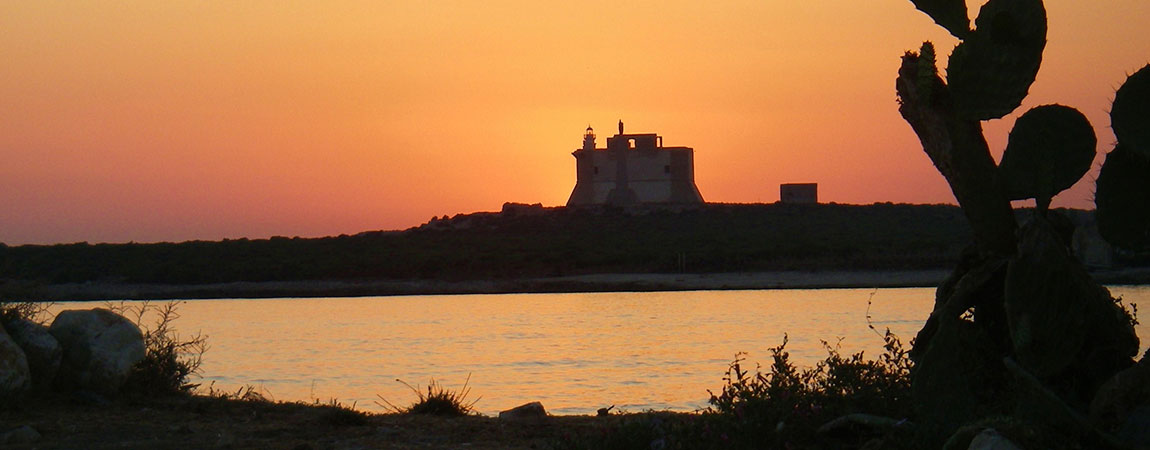
In the Ionian Sea, a few miles from the south-eastern coast of Sicily, 1300 meters by 500 meters of emerged land form the island of Capo Passero.
With an area of 0,37 square km and an altitude of just 21 meters above sea level, the island of Capo Passero, also known as "the house of a scupazzo“, is a small but very rich world unto itself: the landscape and history of this island enchant and attract many visitors, despite some attractions, such as the Spanish fort, are not officially open to the public. So here are all the secrets of this island in the island.
The peninsula of Capo Passero
To tell the story of the island, we must start right from the beginning: in fact, originally, and until the mid-eighteenth century, this was not a real island at all, but a peninsula, connected to Sicily by a very thin strip of sand. Today of that connection all that remains is a shallow water dominated by the currents, a route used only by the small boats that take tourists from in the summer Porto Palo to the Herd stopover, the landing on the solitary islet.
If the beauty of the sea is immediately apparent, you soon notice the other details that make the landscape one of the main reasons for visiting the island: the dunes on the beach, the basalt that emerges from the limestone rocks, the caves and cliffs that appear on the surface and then, the shallow waters with warm and transparent waters, full of treasures to be discovered by doing snorkeling, such as barrier Reef. This nature once dominated by man has now taken over again and finds its symbol in the dwarf palm, the so-called "dirty” which, above all in the first half of the last century, grew luxuriantly on the island alongside the lily and the sea rocket, giving life to the Mediterranean maquis.
The history of the island of Capo Passero
Today who arrives on theislet of Capo Passero, it also does it to admire the testimonies of the past, which are found at the Spanish Fort, less than half an hour's walk from the Scalo.
Il Spanish fort it was built in the 1871th century on the highest point of the islet at the behest of the viceroy of Sicily, who thus transformed Capo Passero into the first stronghold to defend the island from raids by pirates and attacks by the Saracens. The fort performed its defensive function until the XNUMXth century, but it had already been used as a military prison for a century earlier. With the birth of the Kingdom of Italy, the Fort ceased its defensive activity, while the Italian Navy was entrusted with the management of the lighthouse built at the Fort in XNUMX. In the early XNUMXs, the Spanish Fort was restored, but unfortunately , today it has not yet been officially reopened to visitors.
What else to see on the island of Capo Passero
In addition to the wealth of the underwater world (also populated by lobsters, sea bass and white bream) the island of Capo Passero also offers other attractions to visitors: the beauty of the coast, the panoramic square, the tuna warehouses where you can still see the sceri (the old fishing boats used in the slaughter of tuna) and the anchor cemetery. This site in particular bears witness to a time when tuna fishing was one of the main activities in all of Sicily and the nets were thrown onto the seabed with the heavy anchors.
Not far from the Spanish Fort, it is possible to see one of the last human traces left on the island in the last century, namely the statue of Mary of Nazareth, created by the sculptor Mario Ferretti.
A day of vacation in Capo Passero
Taking advantage of the transport service managed by the boatmen, it is possible to spend a magnificent summer day on the islet of Capo Passero, sunbathing on the beach, and then swimming in the calm and warm waters of the Ionian Sea; those who love exploration can go snorkelling or dedicate themselves to discovering the Fort, going around the islet, before returning to Porto Palo, retracing the few meters by boat that separate the islet from the island. Here, in the southernmost seaside village of Sicily, it is possible to relax, discover another stretch of local history and enjoy the best dishes of the Sicilian tradition.
How to get to the island of Capo Passero
To reach the island of Capo Passero (where it will be possible to move on foot) it is necessary to embark for it Scalo Mandrio from Porto Palo. The journey, a few tens of meters, takes a few minutes of travel in calm waters.
To get to Porto Palo, in the Libero Municipal Consortium of Syracuse, one travels in the car up to Noto, which is about 20 km from the village; alternatively, you can also reach the goal on the train, getting off at Ragusa Station (44 km) and continuing the journey in bus or shuttle.
© Image by Except Cannizzaro, CC BY-SA 3.0, via Wikimedia Commons









